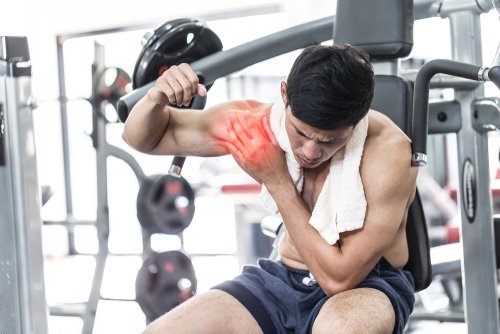
SLAP tears, also known as acute SLAP injury or labral tears, are frequently encountered with orthopedic shoulder injuries, especially among athletes and individuals aged 30 and above. You might have come across this term before, but what exactly does it refer to?
At Barrington Orthopedic Specialists, patient education is important to us, and we want everyone to understand the common injuries. Here are a few common questions our shoulder specialists receive regarding SLAP tears, and the answers you may have been looking for.
We prioritize patient education and strive to ensure that everyone comprehends these common injuries. So, let's address some common questions our shoulder specialists often receive about SLAP tears and provide you with the answers you've been seeking.
What is a SLAP tear?
SLAP stands for “Superior Labrum Anterior and Posterior.” which is the ring of cartilage that surrounds the socket of the shoulder joint known as the labrum. The tear occurs in the top (superior) area of the labrum, where the biceps tendon is attached. Specifically, the tear happens in the front (anterior) and back (posterior) of the attachment. The biceps tendon might be injured, too.
SLAP, short for 'Superior Labrum Anterior and Posterior,' refers to the ring of cartilage encompassing the shoulder joint socket, known as the labrum. A tear commonly occurs in the upper (superior) region of the labrum, precisely where the biceps tendon attachment is positioned. This tear affects both the front (anterior) and back (posterior) of the attachment, potentially impacting the biceps muscle and its tendon.
What Are The Most Common Causes of SLAP Tears?
Patients often experience SLAP injuries due to two main scenarios: repetitive or aggressive shoulder motion over time, or sudden acute trauma. However, it is important to note that these scenarios do not occur randomly. There are several situations that can increase the risk of a SLAP tear, including:
- Falling onto an outstretched arm
- Catching heavy objects
- Motor vehicle accidents
- Forcefully moving your arm above shoulder level
- Dislocating your shoulder
- Participating in repetitive overhead sports, like weightlifting, baseball or swimming
In addition to these scenarios, SLAP injuries can also occur as a result of natural wear and tear from age and use. If you are over the age of 30, it is advisable to be mindful of your risk for SLAP tears and take extra care when engaging in activities involving overhead motion.
It is important to note that SLAP tear surgery and the health of the rotator cuff tendons are crucial aspects to consider when discussing shoulder blade injuries.
How Do I Know If I Have a SLAP Tear?
Shoulder pain can be caused by various conditions and injuries, including SLAP tears. If you experience any of the following symptoms in your upper arm bone or shoulder joint, it's crucial to consult an orthopedic shoulder specialist for a professional diagnosis:
- Significant pain when moving or holding your shoulder in specific positions
- Unusual sensations in your shoulder, such as locking, grinding, or popping
- Decreased range of motion and loss of strength in your shoulder
- Intense pain when lifting heavy objects overhead
- Difficulty performing throwing motions
- Feeling like your shoulder might dislocate from its socket
Athletes who rely on overhead motion in sports like baseball or softball may also notice a decline in performance, particularly in throw velocity. It's important to address these symptoms and seek appropriate medical attention to ensure the health and stability of your shoulder socket.
If I Have a SLAP Tear, What Comes Next?
If our orthopedic shoulder specialists determine that you have an acute injury, such as a SLAP tear involving the labrum and biceps tendon, further diagnostic testing may be required. This may include an MRI arthrogram to better assess the extent of the injury.
Fortunately, non-invasive and non-surgical techniques can often effectively manage SLAP injuries. These may include anti-inflammatory medication and physical therapy, which involves specific exercises to improve strength, flexibility, and restore range of motion.
In cases where the injury is severe and conservative treatments are not sufficient, arthroscopic shoulder surgery may be recommended by your specialist. This surgical procedure aims to repair the damaged tissue and provide long-term relief.
If you’ve injured your shoulder and are seeking an accurate diagnosis from an orthopedic specialist, the orthopedic shoulder experts at Barrington Orthopedic Specialists are here to help you get the treatment you need. To be scheduled with a physician at Barrington Orthopedic Specialists, contact our office at (847) 285-4200 or schedule online here.
For urgent needs when our physician’s offices are closed, visit our Immediate Orthopedic Care (IOC) in Schaumburg, Illinois.
